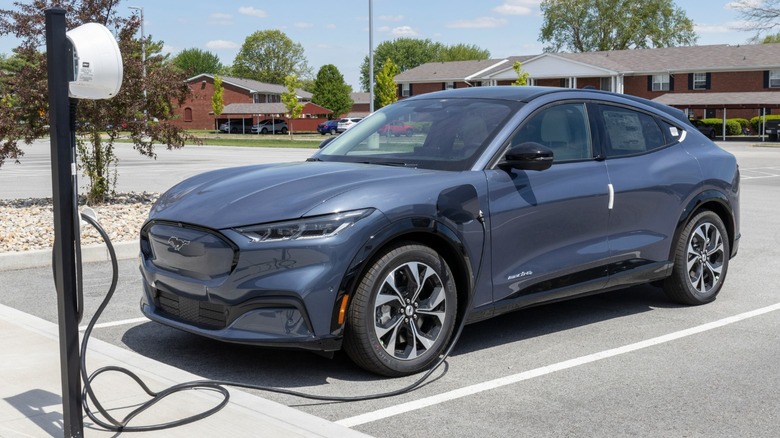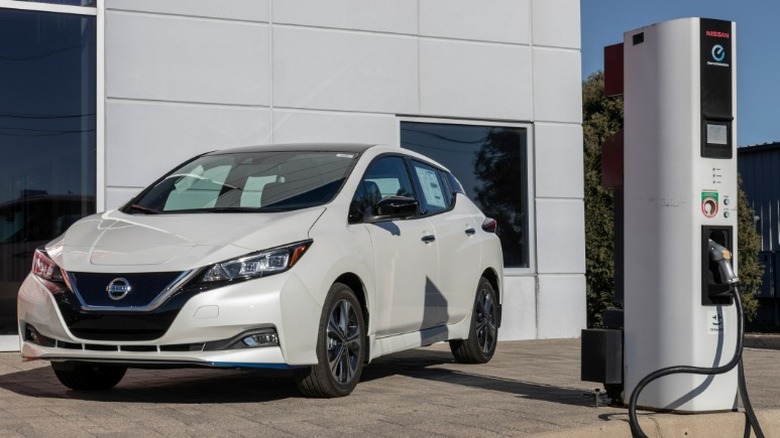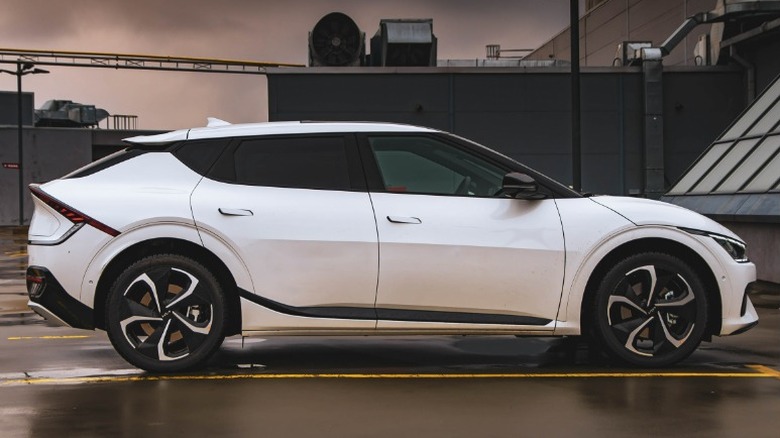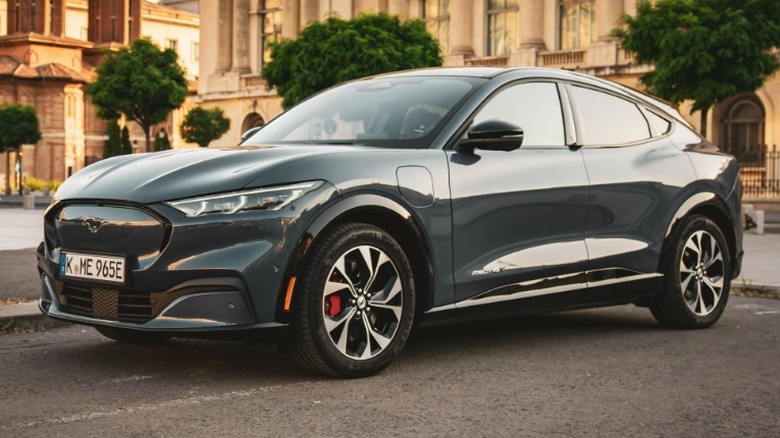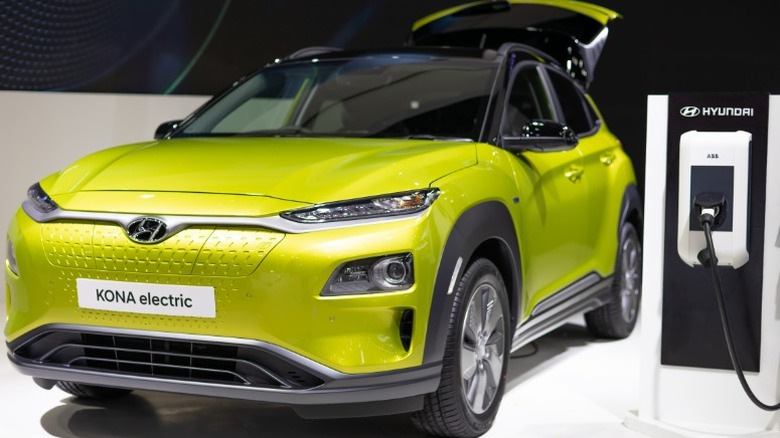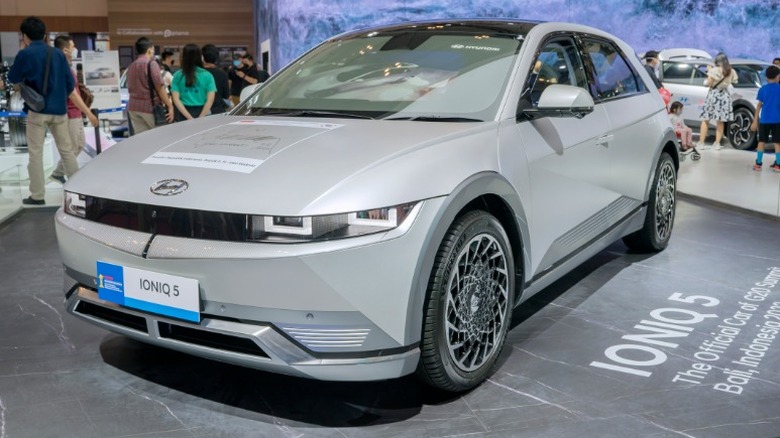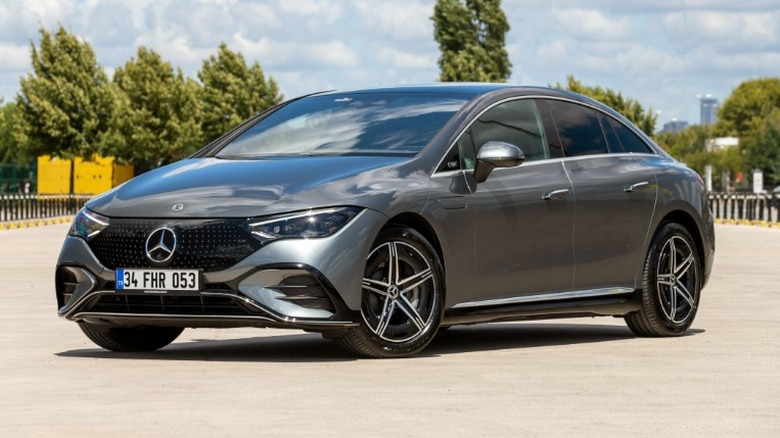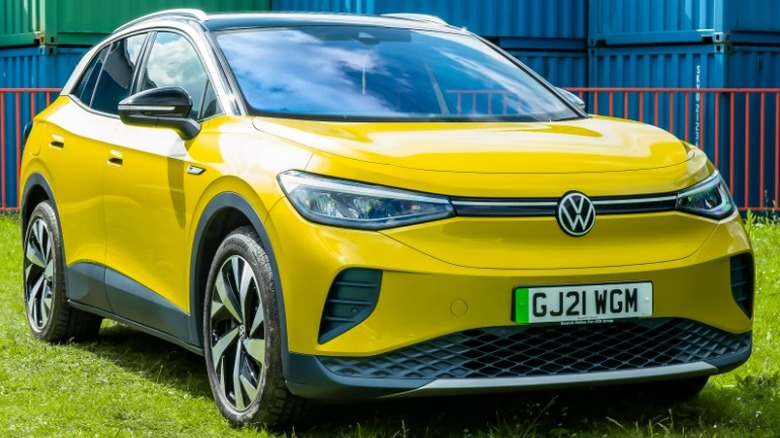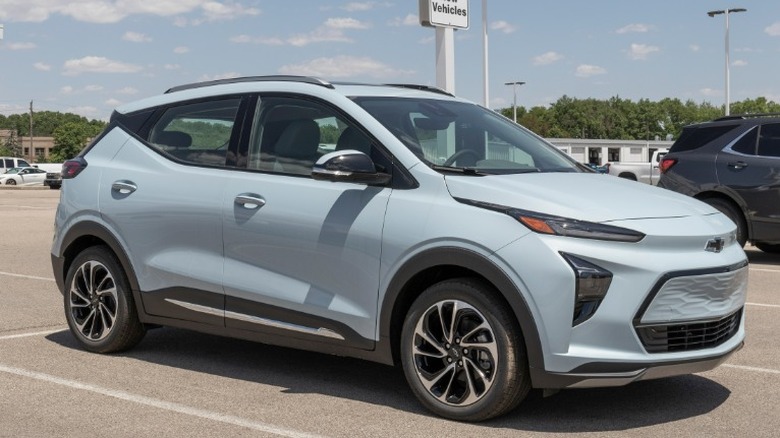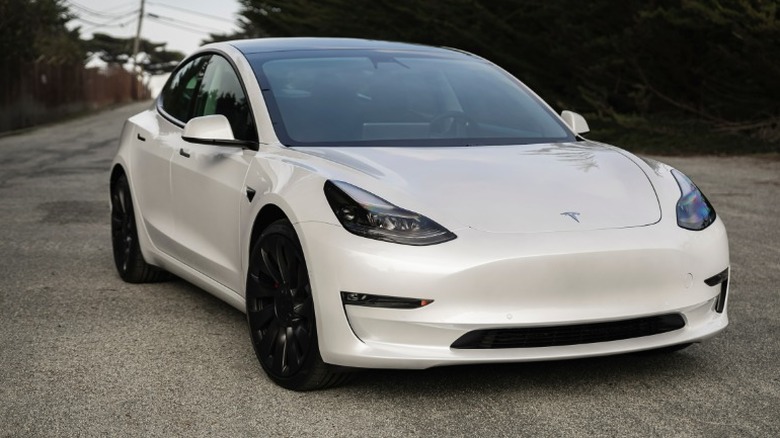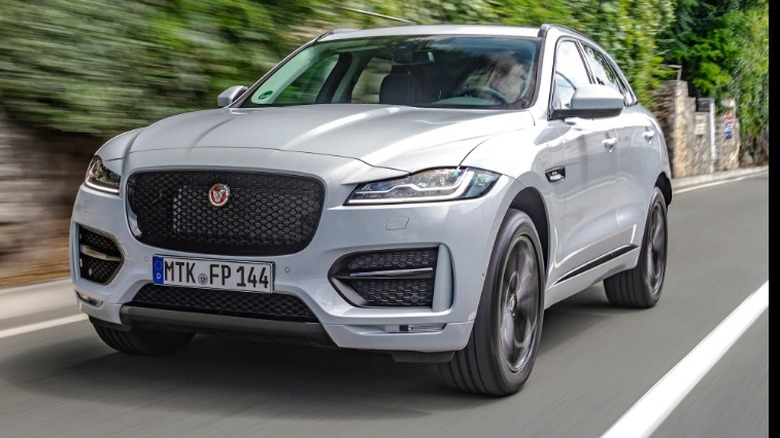10 Electric Cars With The Lowest Maintenance Costs
Consumer Reports recently conducted a study focusing on electric vehicle (EV) ownership costs compared to traditional internal combustion engine (ICE) vehicles. The study found that, generally, EVs are less expensive to own over the long term than gas cars. Fuel (or the lack thereof) represents a significant source of savings for EV owners, and charging an EV at home costs less than filling a fuel tank. Owners of cars with a driving range of 250 miles or more can recharge their EVs about 92 percent of the time at home with low-cost chargers instead of using public fast chargers.
The Consumer Reports study also found that electric vehicles are less expensive to maintain than traditional ICE vehicles. EVs have fewer moving parts and do not require tune-ups, oil changes, or coolant flushes, and they lack many parts that need periodic replacement, such as mufflers, starter motors, and hoses.
Although battery replacement on an EV can be costly, owners are paying about half as much for maintenance as gas-powered car owners. According to the federal Office of Energy Efficiency and Renewable Energy, EV scheduled maintenance expenses average $0.06 per mile, while ICE vehicles average $0.10 per mile. Furthermore, EV maintenance costs vary widely by manufacturer, from an annual cost of $238 for the Chevrolet Bolt to $748 for the Nissan Leaf. Here are ten electric cars with the lowest maintenance costs.
Nissan Leaf Electric
The Nissan Leaf is a good choice for the budget-minded buyer more concerned with saving than driving the latest EV model. Nissan offers the 2023 five-door electric subcompact hatchback with an MSRP of $27,800 for the basic S trim and $35,800 for the SV Plus, placing it at the low end of the electric car price range. The Leaf still qualifies for a federal tax credit of up to $7,500 and some state incentives, such as the California Clean Vehicle Rebate program, which pays $2,000 to buyers of a new Leaf EV. The low purchase price and an estimated annual maintenance cost of $748 make the Nissan Leaf the most affordable EV in the U.S.
The single electric motor and 40-kWh lithium-ion battery in the S trim send 147 horsepower and 236 lb-ft of torque to the front wheels. It has a range of 149 miles and requires about 7.5 hours to fully charge on a 240-volt home system. The SV Plus has a more powerful motor and bigger battery, producing 214 horsepower and 250 lb-ft of torque.
The cabin is simple, with abundant plastic, but the interior includes a state-of-the-art infotainment system, ample room for rear passengers, and 23.6 cubic feet of cargo space. A full range of safety features includes pedestrian detection and blind-spot monitoring. Although the S and the SV Plus acceleration won't leave drivers breathless like a Tesla Model S, both trims provide adequate performance and range for city driving.
Kia EV6
Winner of the 2023 Car and Driver "10 Best Trucks and SUVs" award, the Kia EV6 offers a more attractive futuristic exterior design than its sibling, the Ioniq 5, a spacious feature-rich cabin, and lively performance starting at $50,025. Annual maintenance costs are estimated at $474.
The base model has a single electric motor mounted on the rear axle, giving it rear-wheel drive and 167 horsepower. Kia offers two battery options: a 58.0-kWh pack with an EPA-rated range of 232 miles and a long-range 77.4-kWh pack with an EPA rating of up to 310 miles. When plugged into a 350-kW fast charger, the battery can be charged from 10 to 80 percent in under 18 minutes.
The top-of-the-line EV6 GT trim is powered by two electric motors that produce 526 horsepower with rear or all-wheel drive. While an optional larger battery pack provides 310 miles of driving range in the most efficient base model, the extra horsepower of the GT reduces the estimated driving range to 206 miles per charge.
Car and Driver tests showed an acceleration for the 526 horsepower GT to 60 mph in a remarkable 3.2 seconds. By comparison, a $652,000 Ferrari Enzo with 651 bhp does it in about the same time. The GT displays agile handling characteristics with enhancements such as an electronic limited-slip differential, firmer chassis tuning, an adaptive multilink suspension, and adjustable regenerative brake settings for 15.0-inch and 14.2-inch vented discs in the front and rear, respectively.
Ford Mustang Mach-E
The Mustang Mach-E brings the classic muscle car into the modern automobile world with a single electric motor and rear-wheel drive. The base model Mach-E has an MSRP of $45,995; the estimated maintenance costs are $3,657 for five years (about $731 average per year).
Boasting features of a crossover and the benefits of an EV, the Mach-E comes with either a standard-range 70.0-kWh battery or an extended-range 91.0-kWh pack which supplies energy to an electric motor mounted on the rear or both axles for the all-wheel-drive model. Buyers can also opt for a content-rich Premium model or a sporty high-performance GT all-wheel-drive version equipped with motors producing 480 horsepower and up to 634 lb-ft of torque. Ford estimates that the Mach-E has a range of 306 miles on a full charge with the extended range battery, but the Premium trims featuring all-wheel drive have slightly less at 290 miles.
Although the Mach-E lacks the conventional power and pleasing exhaust note of a classic muscle car, the EV is quick and agile. The Shelby GT500 features a 5.2-liter V-8 generating 760 horsepower and 625 lb-ft of torque and reaches 60 mph in a mere 3.4 seconds; the Mach-E GT is only 0.1 seconds slower at 3.5 seconds. The 2023 Mach-E also includes industry-standard safety features with a wide array of driver-assistance technology, such as blind-spot monitoring, rear cross-traffic alert, and automated emergency braking with forward-collision warning.
Hyundai Kona Electric
Hyundai offers the Kona EV at an MSRP of $33,550, featuring a well-appointed cabin with several advanced features. A single electric motor provides 201 bhp and a superb driving range of 258 miles per charge. The annual maintenance costs are estimated to be $468.
While the Ioniq 5 draws more media attention, the 2023 Hyundai Kona Electric is a viable option for buyers looking for an economical purchase price and low annual maintenance expenses. The Kona Electric generates 201 horsepower and 291 lb-ft of torque with a range of 258 miles on a single charge of the 64-kWh battery. The Kona electric requires over 9 hours for a 10 to 100 percent charge using a Level 2 charging unit. However, the charging time drops to just over 45 minutes for 10 to 80 percent using a compatible level 3 SAE-Combo fast charger.
The EV offers a well-appointed cabin and comfortable seats, although the back seat is cramped for the average-sized adult. The base model has an 8.0-inch touchscreen with Apple CarPlay and Android Auto compatibility. However, an upgrade to the Ultimate trim level includes a 10.3-inch screen, premium Harman Kardon audio system, and standard equipment for the Limited model and higher. A 7.0-inch instrument cluster display is included with all trim levels. The Kona Ultimate features a standard head-up display and stop-and-go adaptive cruise control. Safety tech includes standard automatic braking, automatic emergency braking, blind-spot monitoring, lane keep assist, rear cross-traffic alert, and driver attention warning.
Hyundai Ioniq 5
The distinctive styling, spacious interior, wonderful riding experience, and rock-bottom maintenance expenses of the Ioniq 5 make it a compelling choice for EV buyers. Car and Driver awarded the 2023 Ioniq 5 a place on its "10 Best Trucks and SUVs" list for its fast charging and long range, and Motor Trend named it the 2023 SUV of the year.
Hyundai offers the EV lineup with several trim levels. At the low end, a single-motor, rear-wheel-drive model produces 168 horsepower and features an EPA-estimated 220 miles of range. At the high end, the all-wheel-drive, dual-motor unit generates up to 320 horsepower with an estimated 266 miles of range. MSRPs range from the SE standard at $42,436 to the Limited at $53,628. Annual maintenance costs are estimated at $327.
The long-range "champion" in the lineup is the single-motor, rear-drive unit boasting 303 miles of range, placing it among the longest-driving EVs available for under $60,000. The 350-kW DC fast-charging capacity can charge from 10 to 80 percent in a mere 18 minutes, as quickly as some more expensive EVs (the Tesla Model 3 charges from 20 to 80 percent in just around 20 minutes at a DC fast charging station). Although the Ioniq 5 does not provide a lot of "frunk" space, the EV interior is spacious, offering more rear-passenger room than either the Ford Mustang Mach-E or the Volkswagen ID.4. Artificial leather upholstery comes standard along with a heated steering wheel, wireless charging, and a hands-free power liftgate.
Mercedes-Benz EQS
Not all low-maintenance EVs are economy cars. The 2023 Mercedes-Benz EQS Sedan offers the buyer interior luxury, sleek aerodynamics, and a host of advanced technology and comfort on the same level as the luxurious S-Class at just over $100,000. Yearly maintenance is estimated at $262.
The base model EQS450+ uses a single motor that drives the rear wheels. The power is sufficient for energetic driving and will handle most highway passing requirements. Mercedes rates it at 329 horsepower and 419 lb-ft of torque, accelerating the EV from 0 to 60 mph in about 5.9 seconds. Slightly more powerful, the EQS450 AWD produces 355 horsepower and 590 lb-ft of torque, while the EQS580 trim, equipped with dual motors, has a total of 516 horsepower and 631 lb-ft of torque. The EQS580 reaches 60 mph in 3.7 seconds.
At the high end of the performance range, the AMG-badged EQS equipped with the Dynamic Plus package generates 751 horsepower and 752 lb-ft of torque and accelerated to 60 mph on the Car and Driver test track in 3.0 seconds flat, beating the Benz-branded EQS580 by 0.7 seconds. Mercedes-Benz equips all the EQS models with a 107.8-kWh battery which the automaker claims will charge 80 percent in 31 minutes using a DC fast charger. The range of the rear-drive EQS450+ is one of the best in the industry at 350 miles. An all-wheel-drive AMG EQS53 model pays the penalty for its higher performance with a maximum range of 277 miles.
Volkswagen ID.4
In the decades-old tradition of the "people's car" (the original Beatle), Volkswagen has made the ID.4 a car for the masses. The electric SUV offers a practical design with a spacious cabin, comfortable seating, and lots of tech with 5-star safety ratings and an estimated annual maintenance cost of about $132. Starting at $38,995 for the 2023 base model, the rear-wheel drive trim has one motor producing 201 horsepower and 229 lb-ft of torque. The upgraded all-wheel drive model includes a second motor and a power output of 295 horsepower.
The entry-level base model uses a 58-kWh battery pack with an estimated driving range of 208 miles. The optional 77.0-kWh battery pack provides an EPA-estimated maximum range of 275 miles per charge, making it competitive with other electric SUVs. DC fast-charging capability is included, eliminating a long wait at a public station. Most buyers would not purchase the ID.4 for its performance. Although the Volkswagen posts acceleration times competitive with traditional ICE compact crossovers, they pale compared to quicker EV competitors. The standard rear-wheel-drive ID.4 accelerates 60 mph in a respectable 7.6 seconds, and the more powerful all-wheel-drive model reaches 60 mph in 5.4 seconds.
The ID.4's handling is less responsive than other EVs in its class but provides a smooth ride. The ample cargo space holds eight average-sized carry-on suitcases behind the rear seat and 26 total when the rear seats are folded down.
Chevrolet Bolt EV
Chevrolet dropped the price of the Bolt EV for 2023, making it the least expensive EV on the market in the U.S. At a base price of $26,500, the updated Bolt is competitive with other small EVs like the Nissan Leaf and Hyundai Kona Electric. It offers reasonable performance, viable range, intuitive tech, and an estimated annual maintenance cost of only $132.
A single electric motor and a liquid-cooled lithium-ion, 66.0 kWh battery connected to the front wheels power the Bolt EV, making 200 horsepower and 266 lb-ft of torque. Chevrolet claims the Bolt accelerates from 0 to 60 mph in 6.5 seconds. The system supports DC fast charging and delivers an EPA-estimated 259 miles on a single charge. Chevrolet says, "DC Public Charging can add up to 100 miles of range in 30 minutes."
The EV is built with front and rear multilink suspensions using struts for structural support, providing excellent handling for an economy car. A driver-activated one-pedal-driving mode provides sufficient regenerative braking to slow the car down under normal driving conditions. When more deceleration is required, 10.9-inch vented discs in front and 10.4-inch discs in the rear provide the braking power. Both 1LT and 2LT trims offer a roomy interior with 36 inches of rear-seat leg room, 17 cubic feet of cargo space behind the rear seats, and 57 cubic feet with the rear seatbacks folded. The 2LT trim has a 360-degree camera, heated steering wheel, heated leather seats, and additional driver safety features.
Tesla Model 3
An annual maintenance cost of only $122, along with a host of state-of-the-art features, makes this Tesla an attractive purchase with an MSRP of $43,630 for the standard Rear-Wheel Drive trim, $53,130 for the Long-Range trim, and $55,630 for the Performance model. All three sleek Model 3 trim levels feature luxurious cabins, outstanding performance, blistering acceleration, and a thrilling driving experience.
The estimated driving range varies for each trim. The most affordable base rear-wheel-drive trim offers a range of 272 miles, the Performance model range is an estimated 315 miles, and the Long-Range trim is an extraordinary 358 miles. Tesla provides several options for charging, including a home-charging station, 240- and 120-volt outlets, DC public-charging stations using an adapter, and Tesla's Supercharger network of fast-charging stations.
All three Tesla Model 3 trims offer exceptional performance. Edmunds says, "The Model 3 feels sporty and engaging thanks to strong off-the-line performance, intuitive and responsive steering, and nimble handling." The base Model 3, equipped with a single motor, accelerates to 60 mph in a quick 5.3 seconds. Edmunds tests showed the rear-wheel-drive Long-Range model reaches 60 mph in 5.1 seconds, while the Performance model with dual electric motors sprinted to 60 mph in a blistering 3.5 seconds on its way to a top speed of 162 mph. The Tesla Model 3 offers infotainment, connectivity, and most driving functions controlled by the massive touchscreen mounted in the dashboard's center. Industry-standard safety features include automated emergency braking, lane-departure warning, and adaptive cruise control.
Jaguar i-Pace
With an MSRP between $71,300 and $79,530, the Jaguar i-PACE competes with other pricy luxury EVs but boasts lower estimated maintenance costs over a five-year period of $1,258 ($252 per year). Jaguar offers the i-Pace in a single trim, the HSE, equipped with two electric motors that generate a combined 394 horsepower and 512 lb-ft of torque. Power sent to the all-wheel-drive system provides enough acceleration to pass slow-moving vehicles on the highway and bolt from one city stoplight to the next.
The 2023 i-Pace comes with a 90.0-kWh battery pack providing an EPA-rated range of up to 246 miles per full charge. While the rating falls below other luxury EVs in the same price range, 80 percent of the battery can be replenished in 40 minutes using Jaguar's standard DC fast-charging port. Using the more common 240-volt AC outlet and i-Pace's 11.0 kilowatts onboard charger requires 8.6 hours for a full recharge. Jaguar mounted the battery pack beneath the floor, giving the car a low center of gravity and stability through challenging curves. An air suspension system provides responsive steering and a comfortable ride.
The touch-sensitive infotainment system employs a 10.0-inch upper display for adjusting the 825-watt Meridian sound system and a 5.5-inch lower screen for cabin climate. The i-Pace includes Android Auto, Apple CarPlay, a Wi-Fi hotspot, and Amazon Alexa voice control. Standard safety features include forward-collision warning, automated emergency braking, lane-departure warning, lane-keeping assist, and adaptive cruise control.
